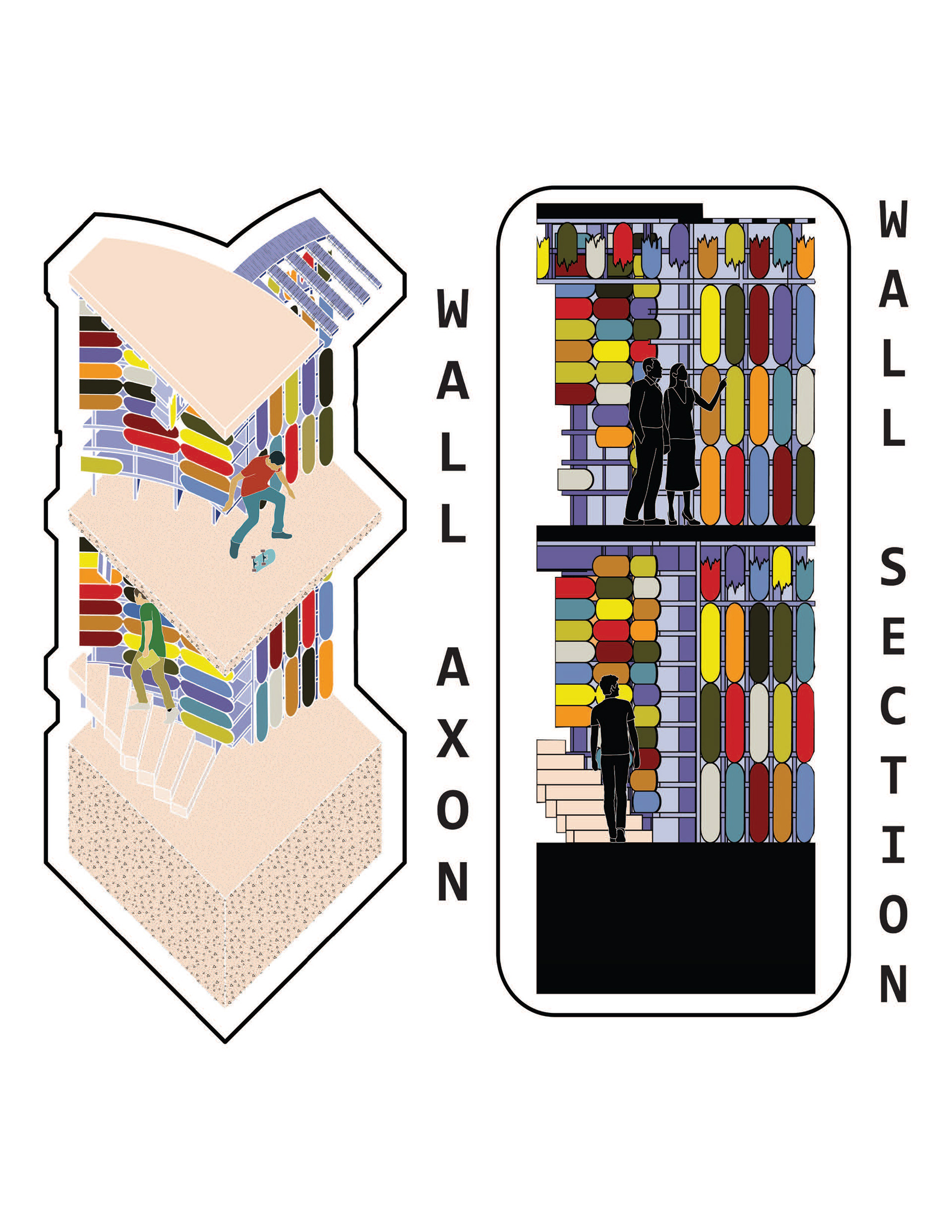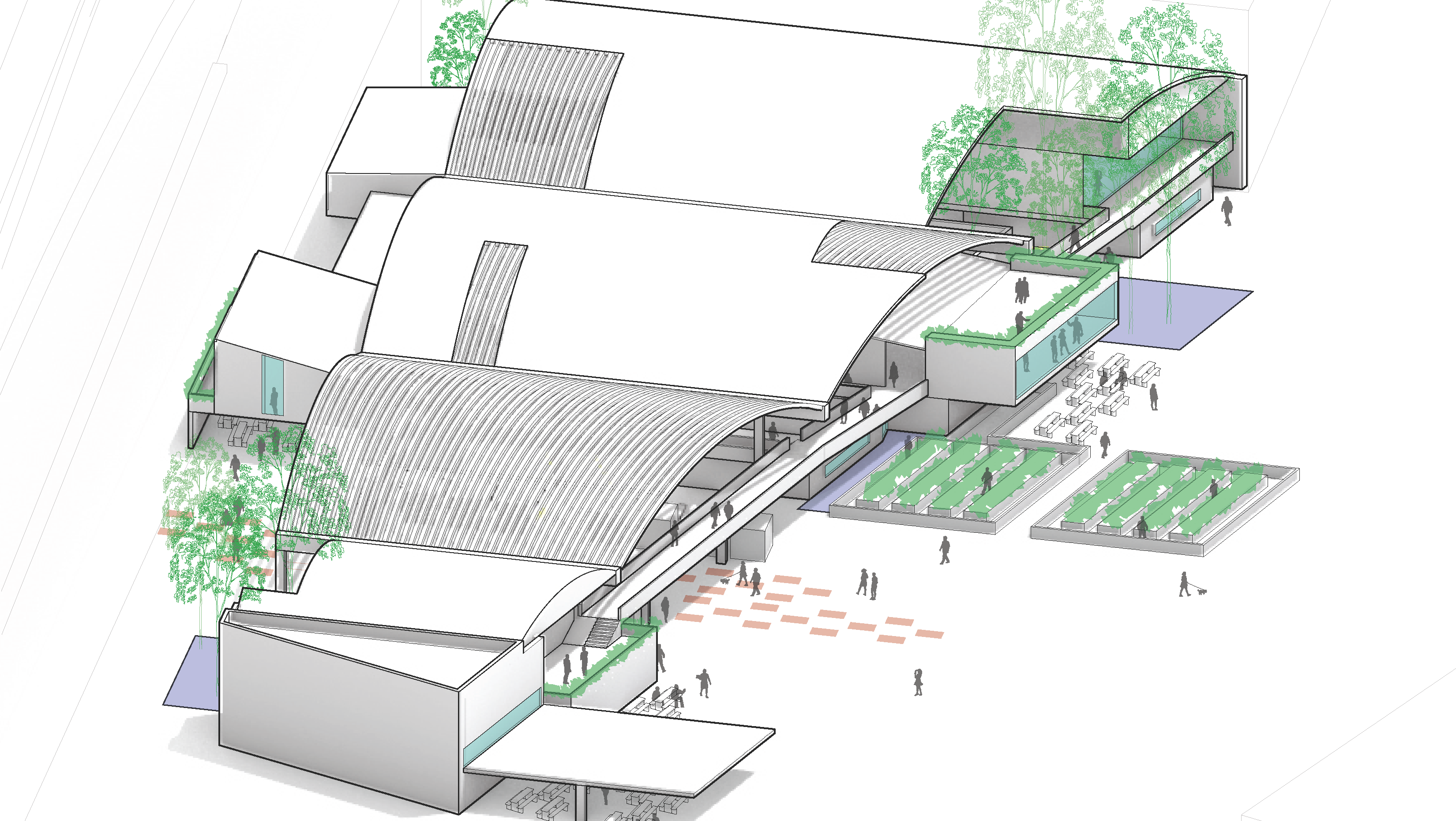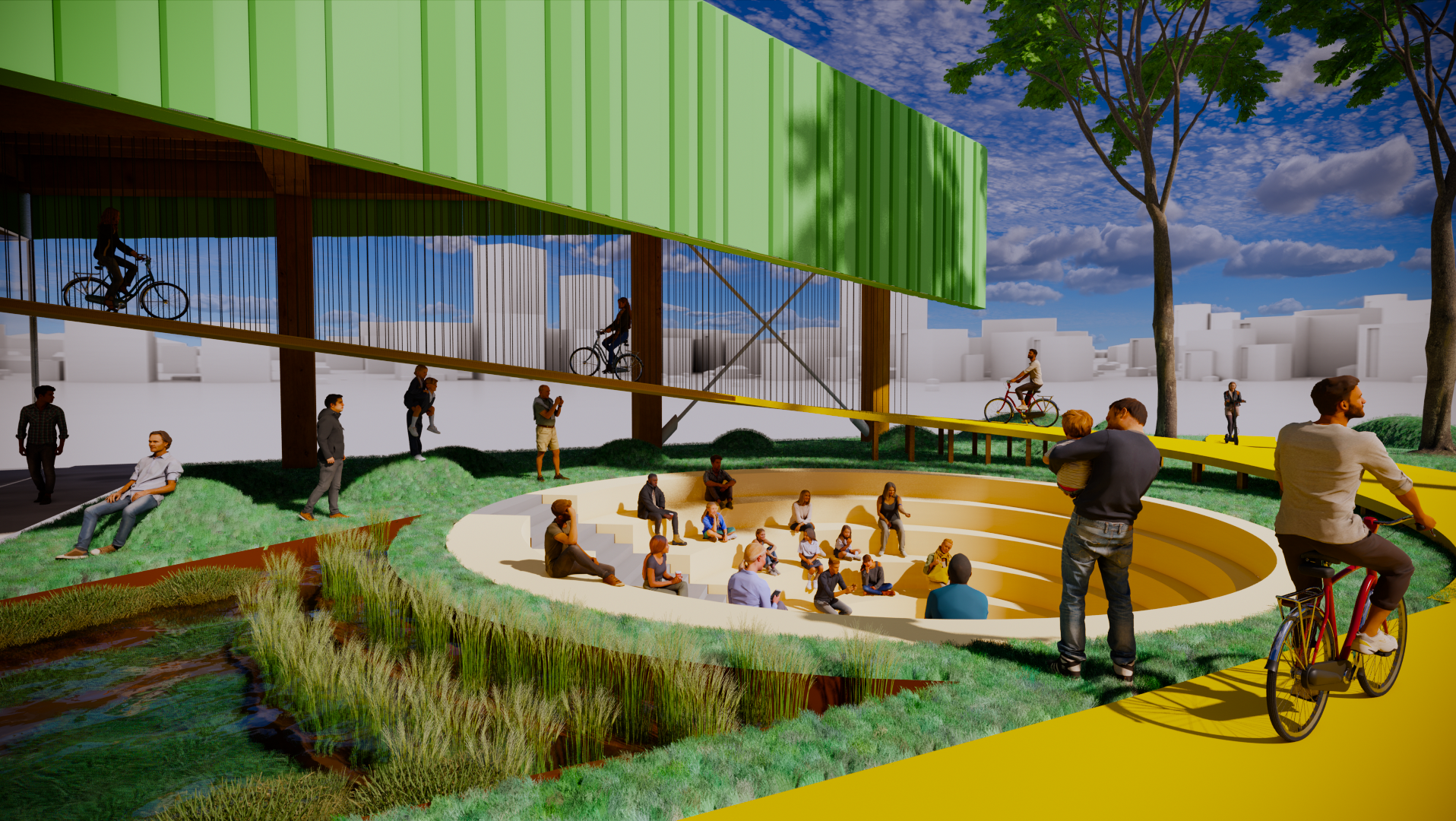PART 1: Shaping the Character of a Joint
When I think of the word lazy, I think of someone who does not want to move or
stand up. In Project 1, I applied that thought to my joints. I came up with two different
variations of how to define lazy, one being droopy, or saggy, and the other
being tired, or exhausted. In the re-modified generic joint, I bent one girder over
the other to make it seem like it was too tired to even hold its own rigid shape
up. In the re-imagined Scarpa joint, I made it tilt at an angle, so it looked as if the
I-beam was leaning atop its supporting columns, making it seems as though it
did not want to stand up on its own. By leaning and drooping different beams and
girders I tried to make it as though supports and furniture began to meld into each
other instead of standing out on their own.
Laziness can also be characterized as efficiency, by trying to get as many things
done in one sitting, sometimes laziness can lead to innovation. With that in mind,
I started to give spaces in my living study multiple functions instead of only one.
For example, if the user is too lazy to climb up three steps to the bed, the desk
and chair area can double as a sleeping and storage space. Also, the welded web
stiffeners, while placed for structural support, are also utilized as cubbies to hold
books or other materials.
stand up. In Project 1, I applied that thought to my joints. I came up with two different
variations of how to define lazy, one being droopy, or saggy, and the other
being tired, or exhausted. In the re-modified generic joint, I bent one girder over
the other to make it seem like it was too tired to even hold its own rigid shape
up. In the re-imagined Scarpa joint, I made it tilt at an angle, so it looked as if the
I-beam was leaning atop its supporting columns, making it seems as though it
did not want to stand up on its own. By leaning and drooping different beams and
girders I tried to make it as though supports and furniture began to meld into each
other instead of standing out on their own.
Laziness can also be characterized as efficiency, by trying to get as many things
done in one sitting, sometimes laziness can lead to innovation. With that in mind,
I started to give spaces in my living study multiple functions instead of only one.
For example, if the user is too lazy to climb up three steps to the bed, the desk
and chair area can double as a sleeping and storage space. Also, the welded web
stiffeners, while placed for structural support, are also utilized as cubbies to hold
books or other materials.




PART 2: Re-Framing a Living Structure
Defined by its surrounding site and located 2 blocks from my house in Venice CA, I decided to transform from a droopy and loose lazy to a semi-rigid lazy in my re-framed living structure for project 2. I made on continuous ramp in the shape of a figure eight, instead of trying to squeeze a structure with stairs in between the pre-existing buildings to accommodate to those lazy people who might find it a burden to walk up or down stairs and easier to walk across and gentle bend in a ramp.
Molded into the empty space in-between the three pre-existing buildings located on my site, I created a ramp structure that acted as a pathway and a resting place for people to read books in this communal library space. Utilizing the same welded web stiffeners that held up the majority of the ramp with other “droopy” I-beams, they continued to also act as bookshelves. So, as people walked up and through the space on this continuous ramp, they could grab a book and find a pocket in the ramp, or welded web stiffener shelf, where they could sit or lay down to read.
Molded into the empty space in-between the three pre-existing buildings located on my site, I created a ramp structure that acted as a pathway and a resting place for people to read books in this communal library space. Utilizing the same welded web stiffeners that held up the majority of the ramp with other “droopy” I-beams, they continued to also act as bookshelves. So, as people walked up and through the space on this continuous ramp, they could grab a book and find a pocket in the ramp, or welded web stiffener shelf, where they could sit or lay down to read.



PART 3: Telling the Tale of Detail
Utilizing filets and simple curves, I transitioned from a loose and semi-rigid lazy, to more controlled forms in my project three “Bagels, Waffles, and Shish Kabobs”.
Located in Venice CA, my protagonist, Dilettante, is a young skater who recently moved into the neighborhood along with a lot of the gentrification in the community. Sensing a divide between him and the kids who’s families have been living there for generations, Dilettante finds himself skating alone very frequently. Approaching a site that looks seemingly under construction, Dilettante is greeted by a construction worker named Weld. Weld takes Dilettante through the site, first exploring the Board Exchange, where the walls are lined with brand new, used, and historic skateboards that are decorative, and also for sale. However, once being taken through the Communal Zone, Weld tells Dilettante that those boards cannot be purchased with money, only with time. All the locals that work here can buy or exchange boards with their time they spend volunteering. Whether that be teaching tricks, lending knowledge on Venice’s culture, or fixing up boards. Weld explains to Dilettante that this is a place where he could not only better his skating, but also get instructions and learn from a local Venetian about the history and culture of Venice that is becoming hidden by all the new tourism and revenue in the community.
Located in Venice CA, my protagonist, Dilettante, is a young skater who recently moved into the neighborhood along with a lot of the gentrification in the community. Sensing a divide between him and the kids who’s families have been living there for generations, Dilettante finds himself skating alone very frequently. Approaching a site that looks seemingly under construction, Dilettante is greeted by a construction worker named Weld. Weld takes Dilettante through the site, first exploring the Board Exchange, where the walls are lined with brand new, used, and historic skateboards that are decorative, and also for sale. However, once being taken through the Communal Zone, Weld tells Dilettante that those boards cannot be purchased with money, only with time. All the locals that work here can buy or exchange boards with their time they spend volunteering. Whether that be teaching tricks, lending knowledge on Venice’s culture, or fixing up boards. Weld explains to Dilettante that this is a place where he could not only better his skating, but also get instructions and learn from a local Venetian about the history and culture of Venice that is becoming hidden by all the new tourism and revenue in the community.



















